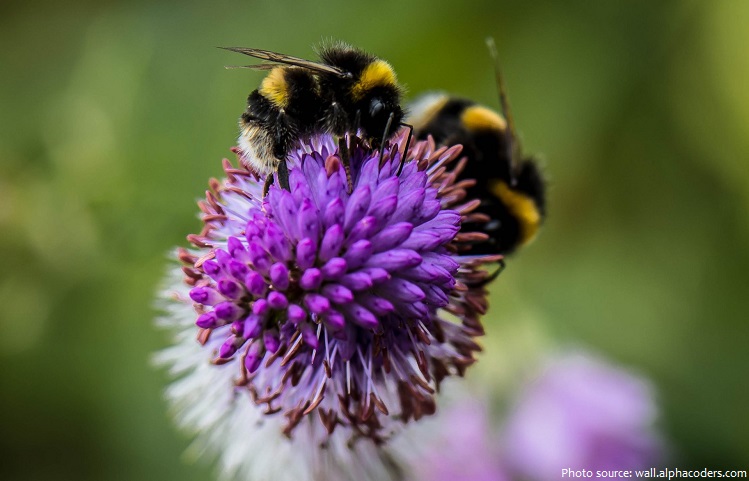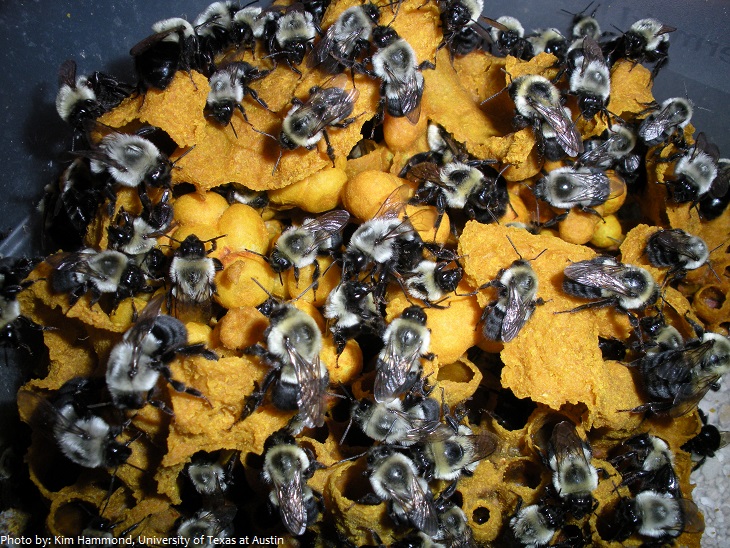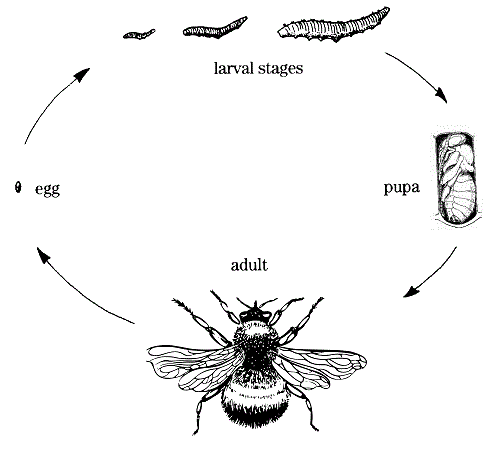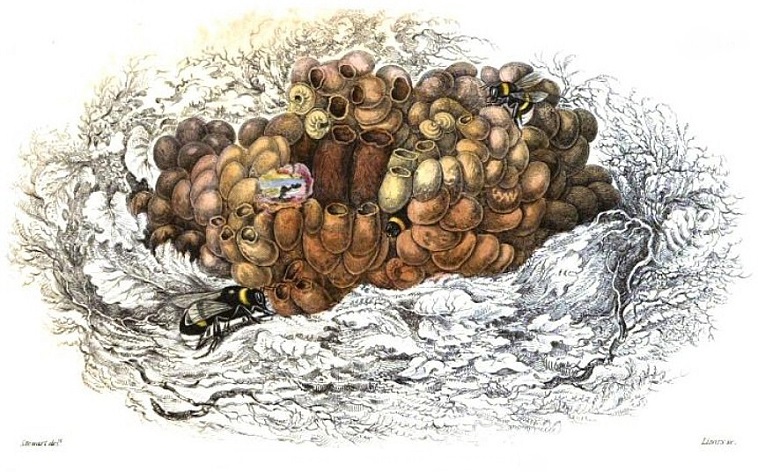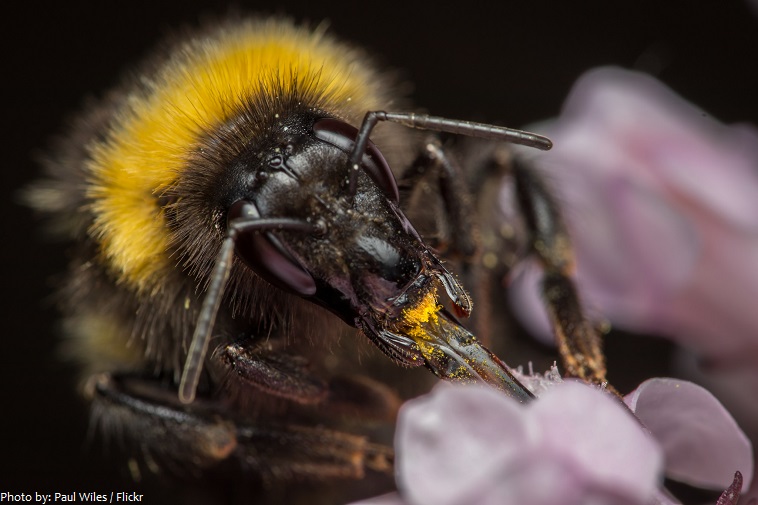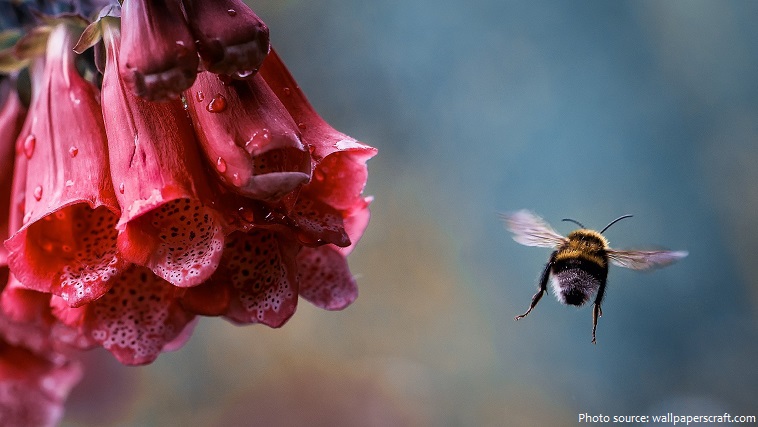Bumblebees also spelled bumble bees are a subset of bees in the genus Bombus.
There are over 250 species of bumblebee.
Most of bumblebee species are found in the northern hemisphere, although South America has a few native species, and New Zealand and Tasmania has some which were introduced from Europe.
Bumblebees are typically found in temperate climates, and are often found at higher altitudes than other bees.
In 2008, a colony of bumblebees was discovered on Mount Everest at more than 5,600 meters (18,400 feet) above sea level, the highest known altitude for an insect.
Bumblebees generally prefer living in meadows, orchards, woodlands, gardens and any other areas where there is an abundance of adequate flowers for foraging.
Bumblebees are large, fuzzy, very hairy insects. They are characterized by black and yellow body hairs, often in bands. However, some species have white, orange or red on their bodies, or may be entirely black.
The largest bumblebee species in the world is B. dahlbomii of Chile, the queens of the species can reach an amazing 4 centimeters (1.6 in) in length. That’s two to three times the size of one of the most recognizable North American species, the American bumblebee (B. pensylvanicus).
Bumblebees are social insects that live in colonies.
A Bumblebee colony typically consists of three kinds of adult bees: workers, a queen, and drones.
The queen bumblebee lays eggs, while the workers bring food and build a nest of wax. Drones are male bumblebees that mate with the queen.
All members of a bumblebee colony undergo complete metamorphosis, passing through the egg, larval and pupal stages before becoming adults.
Nest size depends on species of bumblebee. Most form colonies of between 50 and 400 individuals, but colonies have been documented as small as 20 individuals and as large as 1700. These nests are small compared to honey bee hives, which hold about 50,000 bees.
Nest sites vary between bumblebee species. Many species nest underground, choosing old rodent burrows or sheltered places, and avoiding places that receive direct sunlight that could result in overheating. Other species make nests above ground, whether in thick grass or in holes in trees.
A bumblebee nest is not organised into hexagonal combs like that of a honey bee; the cells are instead clustered together untidily.
During the late fall, the entire colony dies, except for the queen. She hibernates during the winter months underground and starts a new colony in the spring.
When the queen first emerges, she feeds on flowers, drinking nectar to gain energy and then begin to search for a suitable nest site. Then she builds wax cells in which to lay her eggs which were fertilised the previous year. The eggs that hatch develop into female workers, and in time, the queen populates the colony, with workers guard and clean the nest or collect nectar and pollen from flowers to feed themselves their young and other bees in the nest.
Bumblebees eat nectar and pollen, both of which are found in flowers. Pollen is eaten mainly by the queen and the larvae as it is full of protein, although the workers eat some too. Nectar is mainly water with different types of sugary substances in it. Honey is just nectar that has less water and so the sugar has become more concentrated.
Bumblebees feed on nectar, using their long tongues to lap up the liquid; the length of their tongue varies among different bumblebee species.
Nectar is stored in the honey stomach, or crop, in the digestive system.
Bumblebees have a large structure on their hind legs known as a pollen basket that is often loaded with pollen collected by foraging adults.
Unlike honey bees they do not have a large store of honey in their nests, but just enough to last a few days.
Bumblebees have extremely fast metabolisms, so they have to eat almost continuously. It has been estimated that a full honeystomach will give a bumblebee about 40 minutes of flying time.
While foraging, bumblebees can reach ground speeds of up to 15 meters per second (54 km/h / 33 mph).
Bumblebees have asynchronous flight muscles which allow them to beat their wings 200 times per second. Even hummingbirds cannot beat their wings more than a 50 times per second. This fast motion create familiar buzzing sound.
Bumblebees are important pollinators of both crops and wildflowers.
Decline of bumblebees in Europe, North America, and Asia is a cause for concern. The decline has been caused by habitat loss, the mechanisation of agriculture, and pesticides.
Queen and worker bumblebees can sting. Unlike in honey bees, a bumblebee’s sting lacks barbs, so the bee can sting repeatedly without injuring itself; by the same token, the sting is not left in the wound.
Bumblebee species are not normally aggressive, but may sting in defence of their nest, or if harmed.
Cuckoo bumblebees are a group of related species that are descended from “true” or “social” bumblebees. However, cuckoo bumblebees, like their namesake the cuckoo bird, use the nest of true
bumblebees to raise their own offspring. The female (there is no queen) cuckoo bumblebee enters the nest of the true bumblebee and may kill the social bumblebee queen, and lay her own eggs in the nest.
The Russian composer Nikolai Rimsky-Korsakov wrote the Flight of the Bumblebee, c. 1900
Bumblebees appear as characters, often eponymously, in children’s books.
The surname Dumbledore in the Harry Potter series (1997–2007) is an old name for bumblebee.
Bumblebee is the name of a prominent character in the Transformers franchise.
